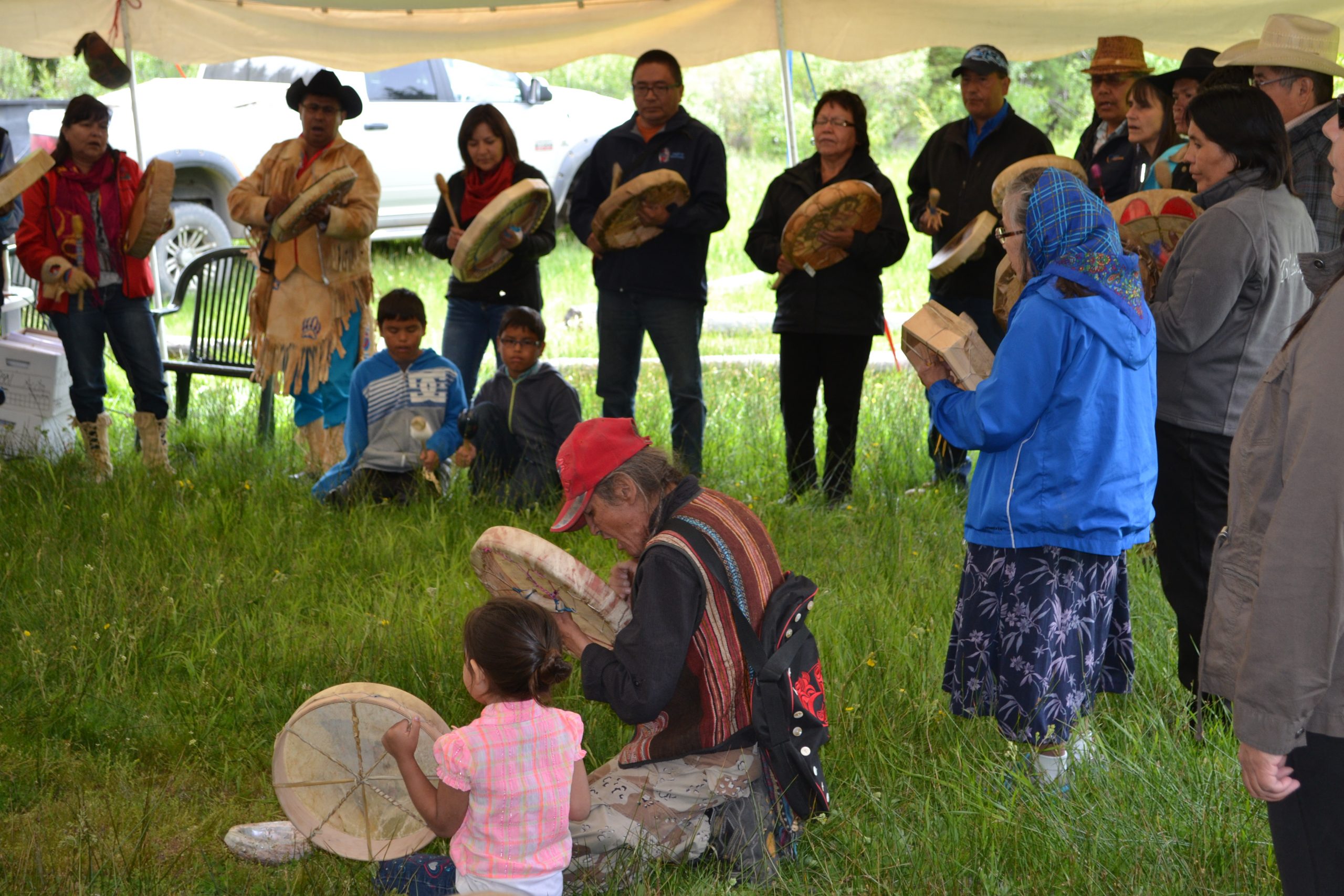Our Partners

Language
The main focus of the language department is to work with the staff with language translation and the Nation in revitalizing and preserving the Tŝilhqot’in language, supporting each community in their language project initiatives, and accessing language proposals. Language Research Projects have been formed in partnership with the University of Victoria (UVic) and Simon Fraser University (SFU).
Tŝilhqot’in language resources can be found at www.tsilhqotinlanguage.ca with Tŝilhqot’in translation available at FirstVoices.
As we experience a continuing language shift, where more people use English to communicate in communities, schools, and homes, the need for language revitalization becomes increasingly urgent and the issues more critical. In particular, we at TNG are working to address the following questions:
Personal Questions
If you have any of the following questions, TNG may be able to assist you in finding the right answers:
- Where can I learn to speak the language more?
- How can I be understood better when I speak?
- What classes are offered and what classes are planned in the coming year?
- How can I be involved using the language at my workplace?
- How can I get my children and others involved speaking the language?
- What formal programs can help people learn the language?
- What informal programs can help people learn the language?
- What apps and other technology is available to help in learning the language?
- How can homes change from using English all the time to include more use of the language?
- How can offices become places where the language is used more?
- How can community events include more use of the language?
National Questions
At the same time, TNG must work to improve the services provided nationally for increasing language knowledge, awareness, and use. As the education team considers ways to improve the quality of language services offered, the following questions arise.
- How can language programs be organized to respect the central orality of the language?
- How should language programs and classes be planned to include more land-based activities?
- What sort of curriculum should be designed to provide the greatest success for learners?
- What sort of programs and courses should be offered at university for students who want to specialize in language study?
- What sort of controls need to be in place to secure the language and keep outsiders from gaining access?
- How should we organize a language committee and what should its role be?
- What should the relationship be between the spoken and written forms of the language?
- How do we honour historic ways of speaking the language, while at the same time, allowing younger speakers to adapt the language to their own needs and desires?
- How do we provide freedom for speakers to use the language naturally, while at the same time providing proper respect for differences between dialects of the language?
- How do we best provide for the recovery of traditional language in stories, songs, and other texts, while at the same time, providing a rich context for creative new language texts, including new media forms?
- How do we encourage the arts in their exploration of novel stories and formats for communication?
Contact
If you want answers to any of these questions or have an interest in discussing these matters, please contact, Randy Radney, Education & Language Manager, in one of the following ways:
Email: randyradney@tsilhqotin.ca Phone: 250-392-3918
Language Committee
The Tŝilhqot’in Language committee was formed in 2010, consisting of Tŝilhqot’in language experts who are fluent and literate in Tŝilhqot’in. The committee is made up of one representative per community. Presently, the language committee is inactive and will be re-established with new membership. The purpose of the language committee is to work on language projects and initiatives that revitalize and preserve the Tŝilhqot’in language & culture.
Speakers
The Tŝilhqot’in (Chilcotin) are known as ’People of the River,’ as salmon was their main food source. The Tŝilhqot’in Nation are located in the Cariboo Chilcotin Central Interior with a population of over 4,000.
The Tŝilhqot’in Nation are rich in their language, culture and traditions. See the percentage of Tŝilhqot’in Language speakers in the graphic below.

Culture
The Tŝilhqot’in Nation are rich in their language, culture and traditions as we actively speak the language, practice our culture and traditions through the following; gatherings, culture camps, drumming, songs, story telling, oral histories, and harvesting.